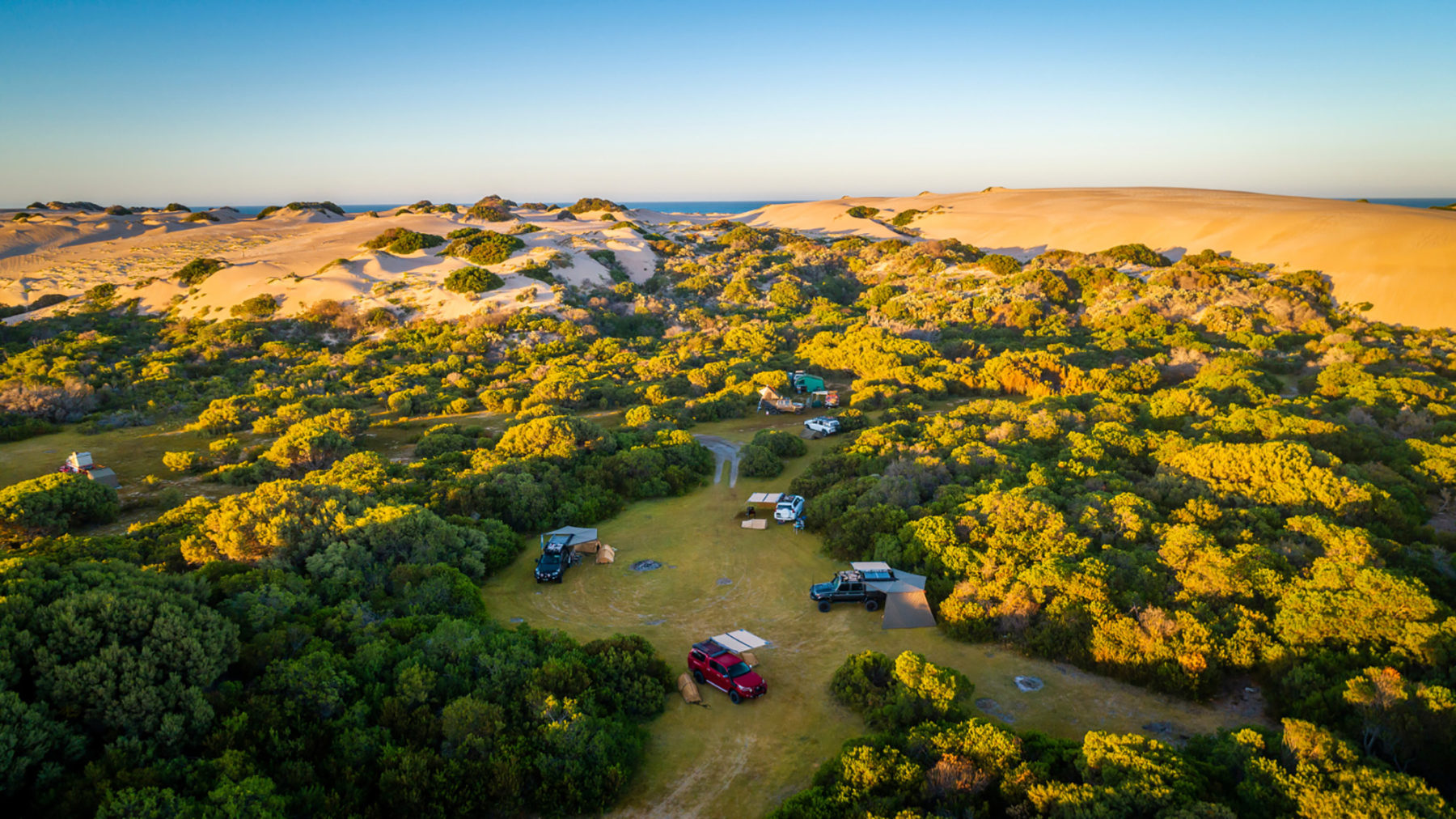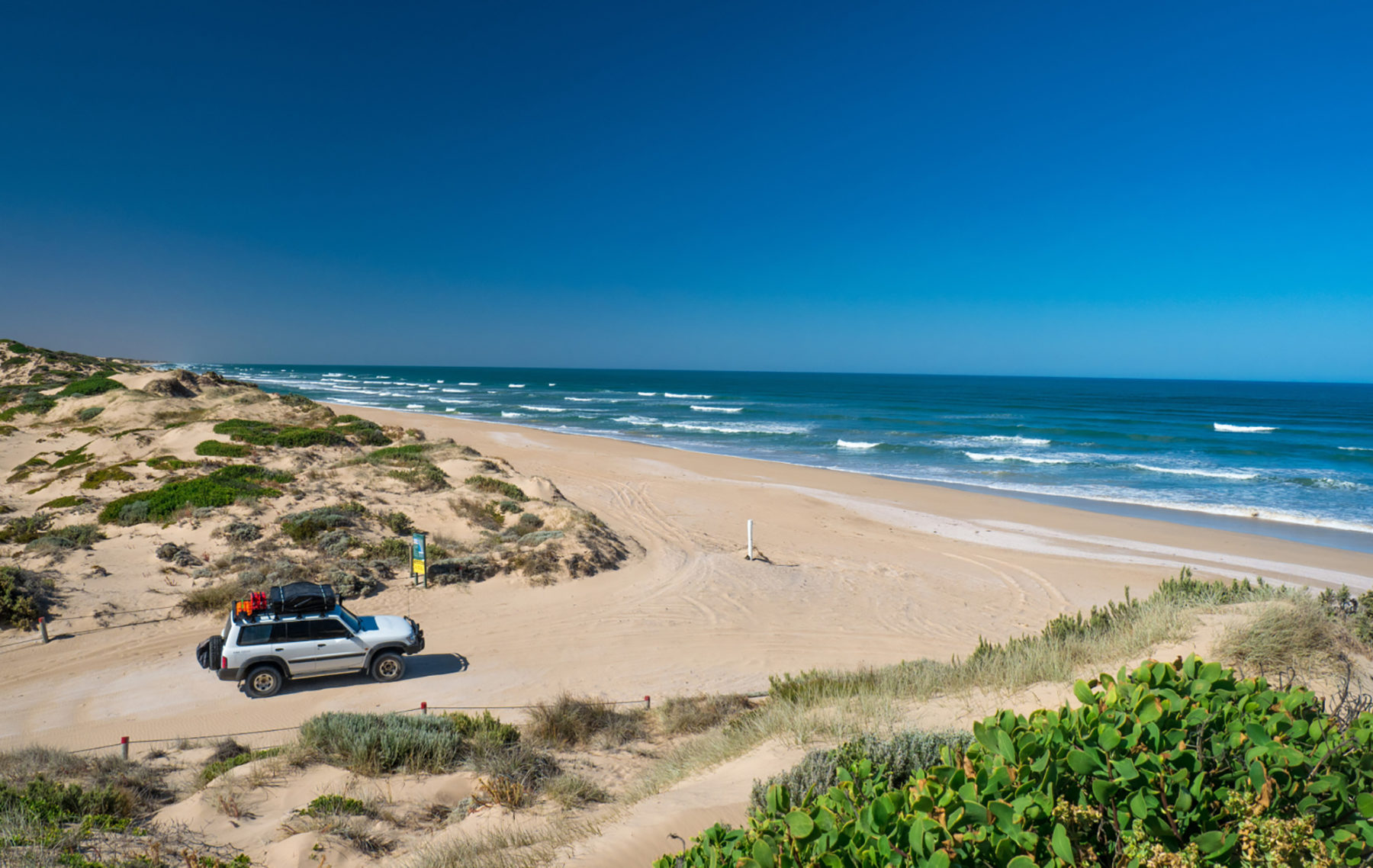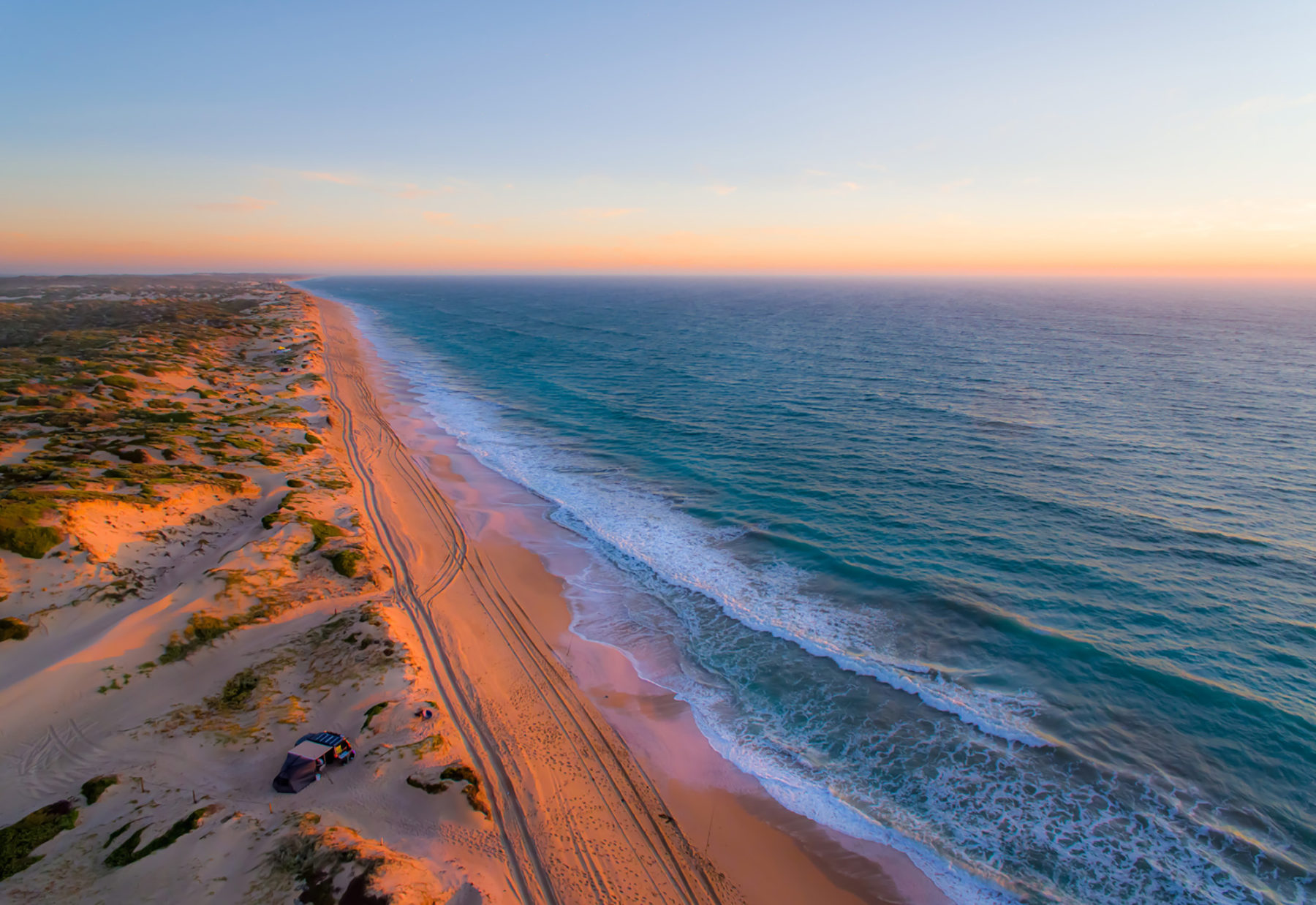Coorong National Park
A relatively short 200km jaunt southeast of Adelaide, ‘the Coorong’ as it is colloquially known, offers a lot of everything for those looking for outdoor escapes close to the South Oz capital. The fantastic beach driving (the best access point is from Tailem Bend, off the Princes Highway) is an obvious highlight. The ocean beach drive (speed restrictions apply here – please adhere to them) is brilliant but be sure to only tackle it at low tide and stick to the section of beach between the low and high water marks. Keep an eye out for post markers that signal a side-track that will take you to designated campgrounds on the other side of the dunes, offering a modicum of protection from the coastal winds.
The beach is shut down for a short period during spring to assist in the protection of hooded plover nests so check the national parks website for access info (this shutdown covers the section of beach running from the mouth of the Murray River to Tea Tree Crossing). And, lastly, don’t forget some water crossings are tide-dependent.

There is plenty of opportunity to throw a line in, with both beach-based and lagoon-focused fishing on offer (Coorong NP encompasses a lagoon ecosystem; the waters of the Coorong are protected from the Southern Ocean’s swells by the sand dunes of the Younghusband Peninsula). Salmon is a common catch offshore, while flathead and bream are just two species you will find in the Coorong’s calm waters. Please note: fishing is not allowed in the marine park sanctuary zones near here, so check maps first, and always practice catch-and-release unless intending to use your catch for a meal.
The Coorong’s popularity as one of the state’s favourite escapes is reflected in the number of campgrounds in the park, With 14 to choose from (some are 2WD-accessible and some are boat-access only). Spread from Barker Knoll and Godfreys Landing in the north and dotted toward the south along the curve of the Younghusband Peninsula down to the southernmost, 28 Mile Crossing, there are plenty of options for two nights in this coastal wonderland. Facilities vary from campground to campground, with some providing access to bushwalks and the park’s waterways for boating and paddling enthusiasts.

Speaking of which, in terms of water-based escapes, boaters and kayakers will have a ball here, thanks to the 150km of lagoon (see our ultimate guide to kayaking). The Northern Lagoon and Southern Lagoon are ‘split’ by Parnka Point that nearly touches the peninsula’s Hells Gate, linking up small beaches and the lagoon’s islands, such as Seagull and Wild Dog. There are numerous walks that are accessible to everyone, including the Jack Point Observatory Walk, a 20-minute journey through sand dunes to a lookout positioned over the park’s pelican breeding islands.
Add the great fishing and family-friendly bushwalking to the fact the Coorong is a haven for birds – more than 200 species have been recorded here – and pile all this on top of beach driving and campgrounds and you’ve got a brilliant city escape in the Coorong.
Ngarkat Conservation Park
For a total contrast to bright lights, busy traffic and bustling city, Ngarkat Conservation Park’s vast outback landscape, a touch over three hours’ drive west of Adelaide along the Mallee Highway, is another of South Oz’s perfect outdoor escapes. The park’s sand dunes, mallee scrub and heathlands ticks all the boxes for a quintessential outback experience. As you’d expect, the park’s location – and weather – means this is one of the country’s desert escapes that is a cool-months destination only.
Ngarkat CP includes 11 campgrounds (including one that offers caravan sites: Pertendi is located just off the sealed Ngarkat Highway), with the majority being 4WD access only (Pertendi, Nanam Well and Pine Hut soak – both in the northwest section – offer 2WD access, as does Comet Bore, off the Ngarkat Hwy). Most campgrounds in the park are quite small – sites range from unallocated to one through to six sites at Coxs Windmill – ideal sized for those after remote outdoor escapes.

Of course, think of Ngarkat CP and you think of its most famous attraction for 4WD explorers: the Border Track. As the name implies, this north-south track follows the fence line boundary that signifies the Vic/South Oz border. The track is challenging and includes a southbound (from the park’s northern boundary) section that reverts to a two-way track once it joins the Centre Track (around 29km south of the track’s northern startpoint). This is designed to ensure the fragile sand dunes and vegetation are as protected as possible.
The Border Track isn’t the only exciting touring option in the park; another (for those heading north to south in the park’s western section) is to enter via Pinaroo, but turn toward Pine Hut Soak (rather than the Border Track start-point). From the campground here you can drive south along the Centre Track, stopping along the way for the short (40 minutes return) Orchid Hike that, as the name suggests, leads through a pine forest that contains native orchids – a seeming oddity here in the mallee/desert country.

As well as off-roading, Ngarkat CP has a load of great bushwalks, ranging from the short (Gosse Hill and Mount Rescue) through to more ‘serious’ treks suited to experienced foot-borne explorers. Pine Hut Soak is the start point for a couple of big ones; the four hour/11km return trek from Pine Hut Soak to Fishponds takes walkers through a sand dune landscape dotted with claypans; the shorter hike to Nanam Well takes you to a restored water well of the same name.
For the vertically inclined, there is the 1.5-hour trek up to the summit of Mount Shaugh. And keep an eye out for wildlife at any waterholes; this arid country hides a surprising number of native animals, and wildflowers when in season.
